No Pomegranates On Trees: How To Get A Pomegranate To Set Fruit

Growing pomegranate trees can be rewarding to the home gardener when optimal conditions are met. However, it can also be alarming when all your efforts result in your pomegranate not bearing fruit. Let's take a look at some common reasons for no fruit and how to get a pomegranate to set fruit.
Pomegranate History
The pomegranate, an ancient fruit, is getting a bit of resurgence in popularity due to the recent discovery of its high amounts of antioxidants. The pomegranate has been widely cultivated for thousands of years in the Mediterranean, Middle East, and Asia, and has been written about in the Old Testament and the Talmud of Babylonia. A symbol of fertility in ancient Egypt, the pomegranate is well suited to these arid climates, disliking humid conditions and overly cold temperatures. Today, the pomegranate is grown for harvest in the drier areas of California, Arizona, and Texas. Punic granatum (from the French name pomme grenate, meaning “seedy apple”) is an apt name for the pomegranate fruit. The pomegranate fruit contains over half its weight in seeds and, like an apple, has a long storage life (about seven months when properly stored). Under its red, leathery skin, the seed is surrounded by sweet, tart pulp and juice. The seeds are separated by a tough white membrane referred to as the rag. The pomegranate seeds can be eaten after separating from the rag or pressed to extract the delicious juice, which is commonly used in grenadine mixed with other juices or drunk on its own. But what happens when there are no pomegranates on trees and, thus, no seeds or juice to extract?
Pomegranate Fruiting
This deciduous bush typically grows from 12 to 20 feet (3.5 to 6) tall and nearly the same in spread. Some patience is required when growing a pomegranate tree, as it takes five to seven months for the fruit to become mature and the tree itself needs two to three years before it bears more than a couple of fruits. In addition, the pomegranate tree loses its vigor after 15 years or so, although some cultivars may live hundreds of years. The fruit of the pomegranate is harvested from October to January.
How to Get a Pomegranate to Set Fruit
Some pomegranate trees are strictly ornamental and are grown for their striking flowers, which bloom from late May until fall. Five to seven crepe-like flowers hang in a cluster from their urn-shaped calyx and range from brilliant red to orange or white. Attractive to hummingbirds, the blooms may be single or double flowering; however, the double cultivars rarely produce fruit. When fruit production is the desired goal, make sure you are planting a fruit-bearing cultivar. Plant in USDA Zones 8-10. Fertilize the pomegranate tree in March and July with a balanced fertilizer (10-10-10) in the amount of 1 pound (0.5 kg.) per 3 feet (91 cm.) of plant height, and maintain an evenly moist soil.
Reasons for No Fruit
Once established, the pomegranate tree is a low-maintenance plant; however, there are a couple of things to watch for with a pomegranate not bearing fruit. To set fruit, the drought-tolerant pomegranate requires additional irrigation and fertilizer. They appreciate a soil pH of 5.5-7 and as is common with most plants, will benefit from a layer of organic mulch. To achieve higher production levels of pomegranate fruiting, plant in full sun. Pomegranate trees tend to sucker and divert energy away from fruit production, resulting in no pomegranates on trees. Prune lightly on a regular basis, but do not cut back too severely, which can affect fruit outcomes. As mentioned, the pomegranate tree is most vigorous in warm, dry climates. In USDA Zone 7, the bush will generally survive the winter, but damage may occur when ground temperatures drop below 10 degrees Fahrenheit. Pollination is another possible reason for a pomegranate not bearing fruit. Plant two or more pomegranate trees to encourage cross-pollination and be sure to plant in full sunlight to foster fruit setting.
Gardening tips, videos, info and more delivered right to your inbox!
Sign up for the Gardening Know How newsletter today and receive a free copy of our e-book "How to Grow Delicious Tomatoes".

Amy Grant has been gardening for 30 years and writing for 15. A professional chef and caterer, Amy's area of expertise is culinary gardening.
-
 8 Noteworthy Native Azaleas Every Gardener Should Know – And Grow!
8 Noteworthy Native Azaleas Every Gardener Should Know – And Grow!Native azaleas offer brilliant blooms in a range of colors and sizes. Here are a few favorites to get inspired and start working on a native shade garden!
-
 Growing Climbing Roses: How To Create Elegant Displays With Maximum Blooms
Growing Climbing Roses: How To Create Elegant Displays With Maximum BloomsMaster the art of growing stunning climbing roses with this essential guide to creating vibrant, fragrant walls and structures all summer long.
-
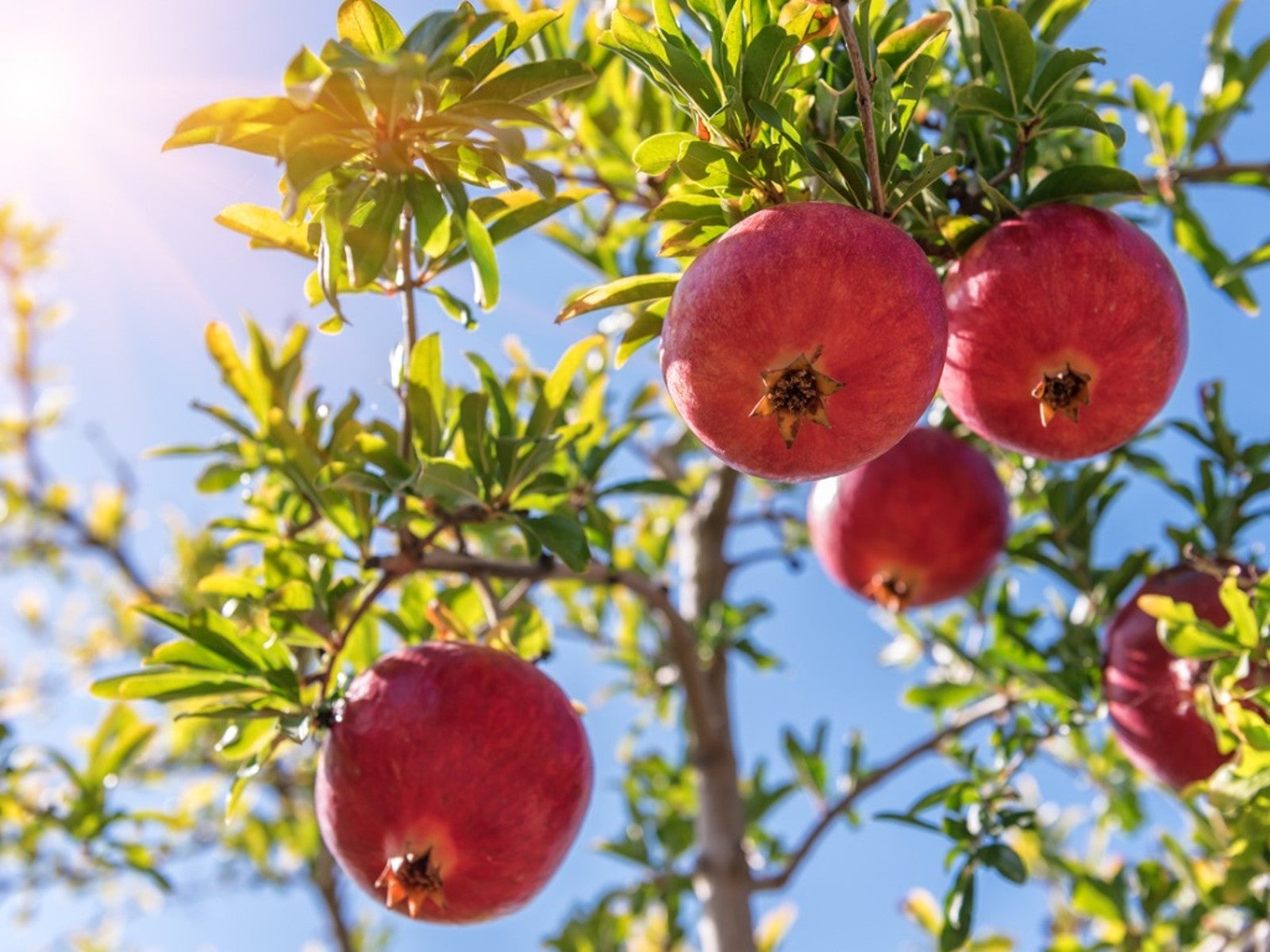 Replanting Container Grown Pomegranate – Tips On Transplanting Potted Pomegranates Outside
Replanting Container Grown Pomegranate – Tips On Transplanting Potted Pomegranates OutsideIt’s pretty easy to transplant a potted pomegranate outdoors. Click for more information on moving a potted pomegranate.
-
 Picking Pomegranates – Learn About Harvesting Pomegranate Fruit
Picking Pomegranates – Learn About Harvesting Pomegranate FruitPomegranates have become so popular that many people in USDA zones 7-10 are trying their hand at growing and picking their own pomegranates. So how and when do you harvest pomegranates? Click this article to learn more.
-
 Yellowing Leaves On Pomegranate: Why Pomegranate Leaves Turn Yellow
Yellowing Leaves On Pomegranate: Why Pomegranate Leaves Turn YellowGrowing a pomegranate tree can be a rewarding experience filled with delicious fruits and beautiful juice, but growing these fruit trees isn't all paradise. If your plant is looking a little off, with yellowing leaves, click here to learn how to save it.
-
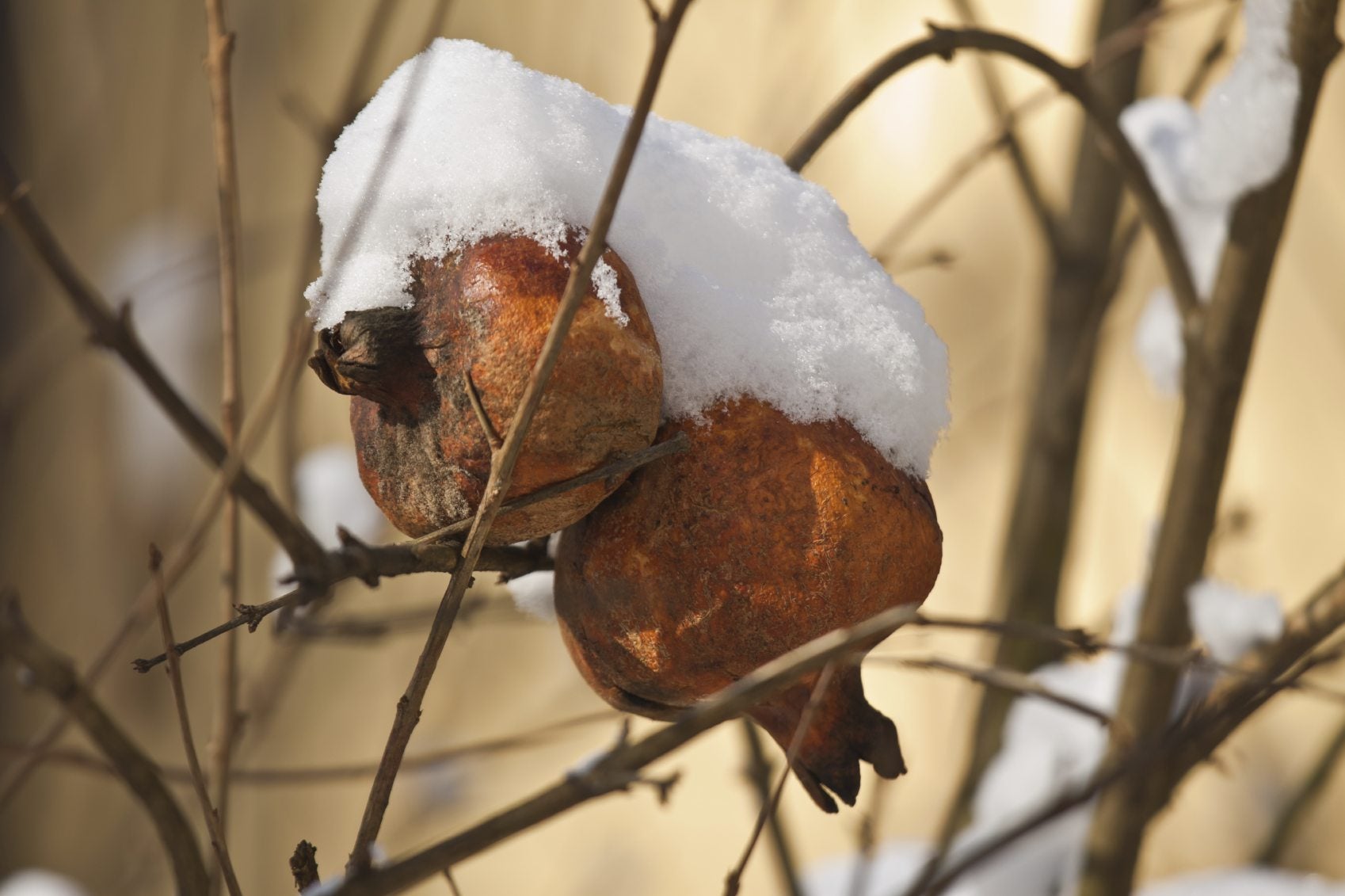 Pomegranate Winter Care: How To Care For Pomegranate Trees In Winter
Pomegranate Winter Care: How To Care For Pomegranate Trees In WinterPomegranates hail from the far eastern Mediterranean so as you may expect they appreciate plenty of sun and should be protected in the winter time. How do you go about overwintering pomegranate trees? Find out in this article.
-
 Pomegranate Tree Leaves Falling Off: Why Do Pomegranate Trees Lose Leaves
Pomegranate Tree Leaves Falling Off: Why Do Pomegranate Trees Lose LeavesPomegranates are typically grown for their fleshy, sweet-tart edible fruits. That being said, pomegranate leaf loss can be a frustrating problem for many gardeners. Click on the article that follows to learn why this happens.
-
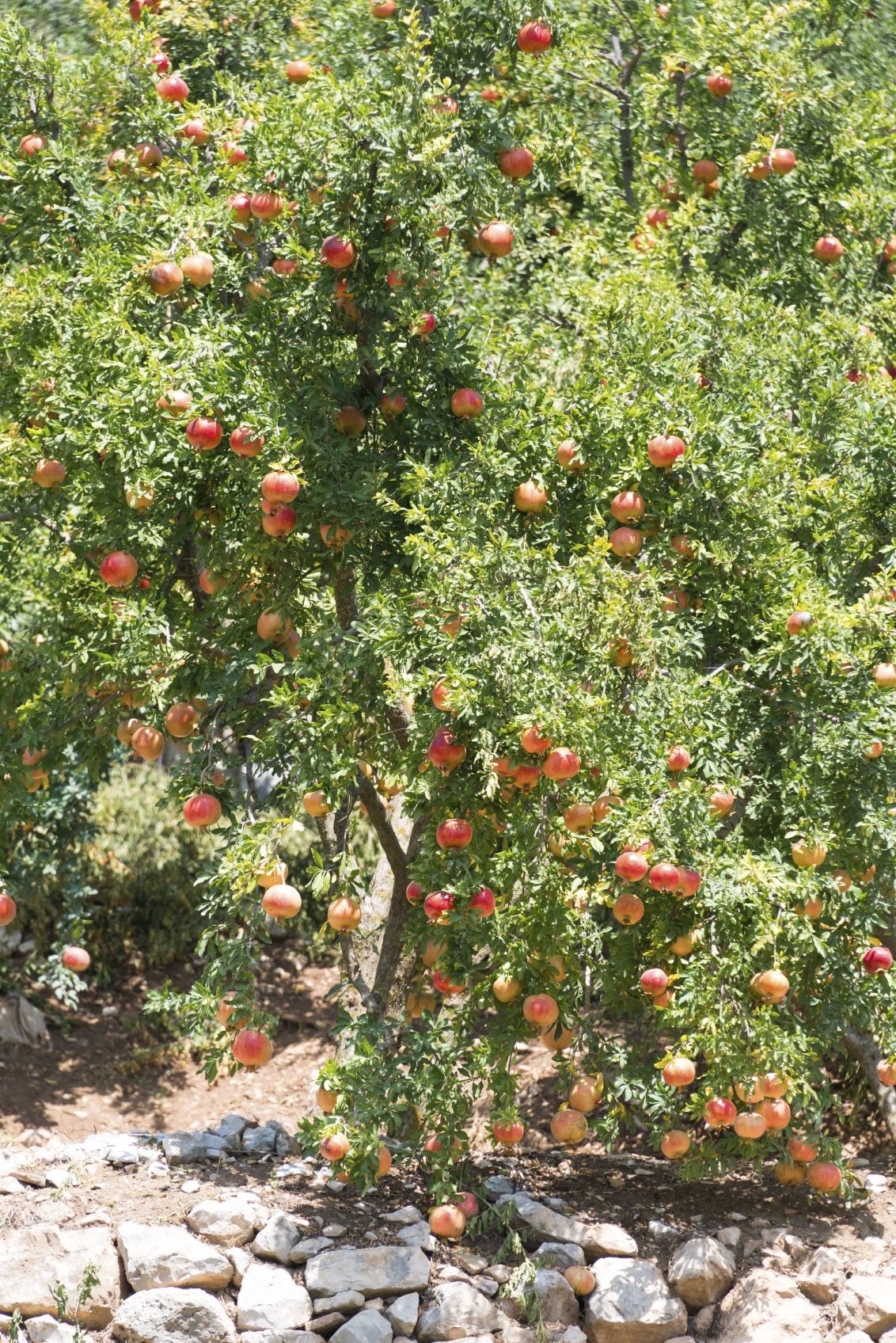 Pomegranate Tree Pruning – Learn About The Cutting Of Pomegranates
Pomegranate Tree Pruning – Learn About The Cutting Of PomegranatesIt is important to prune pomegranate trees properly if you want to increase fruit production and maintain an attractive form. Unfortunately, these two goals are in conflict. Learn more about pruning pomegranates in this article.
-
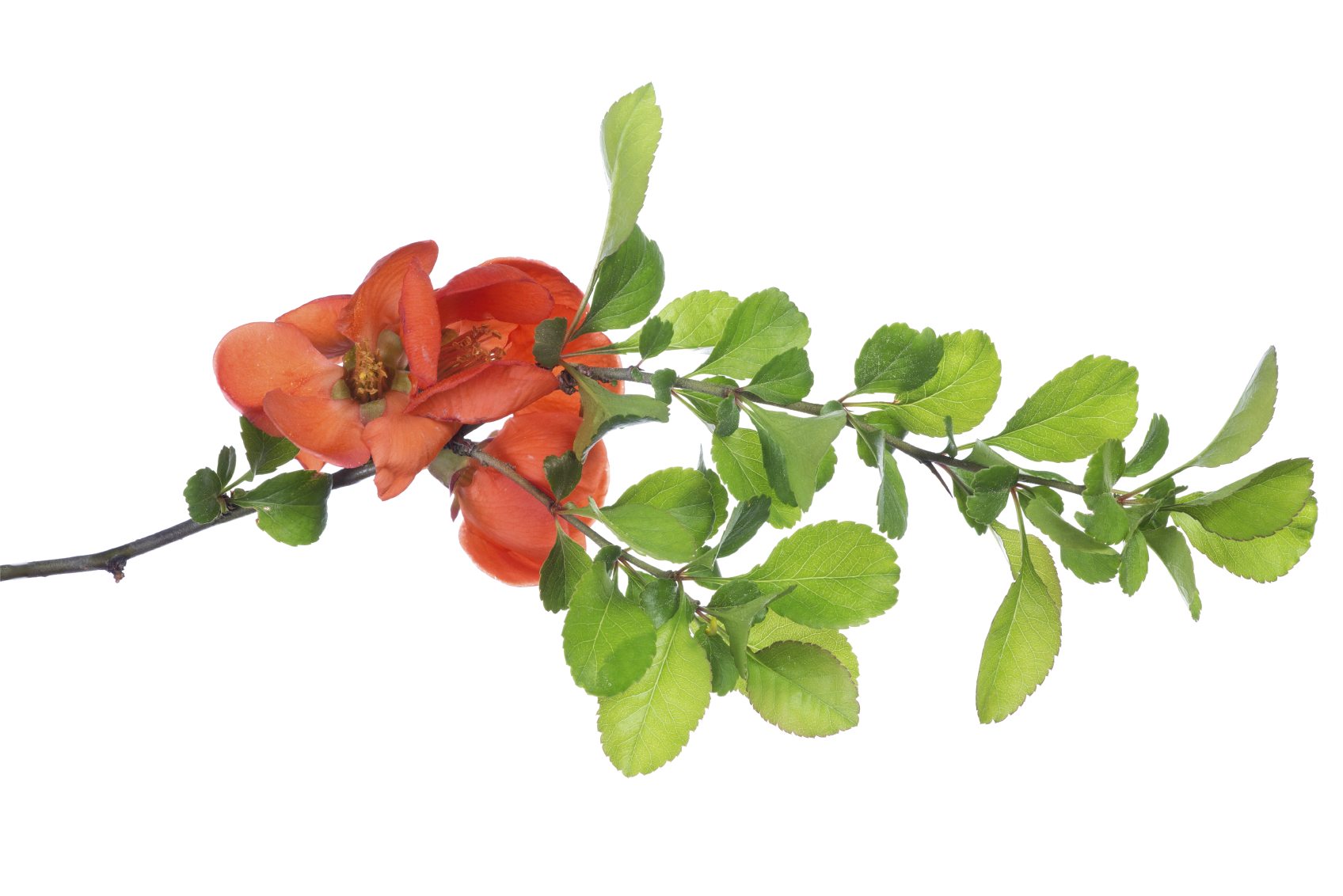 Propagating Pomegranate Trees: How To Root A Pomegranate Tree
Propagating Pomegranate Trees: How To Root A Pomegranate TreeGrowing a pomegranate tree from cuttings is cost-free and relatively easy. Find more information about how to root a pomegranate tree from pomegranate tree cuttings in the article that follows. Click here to learn about pomegranate propagation.
-
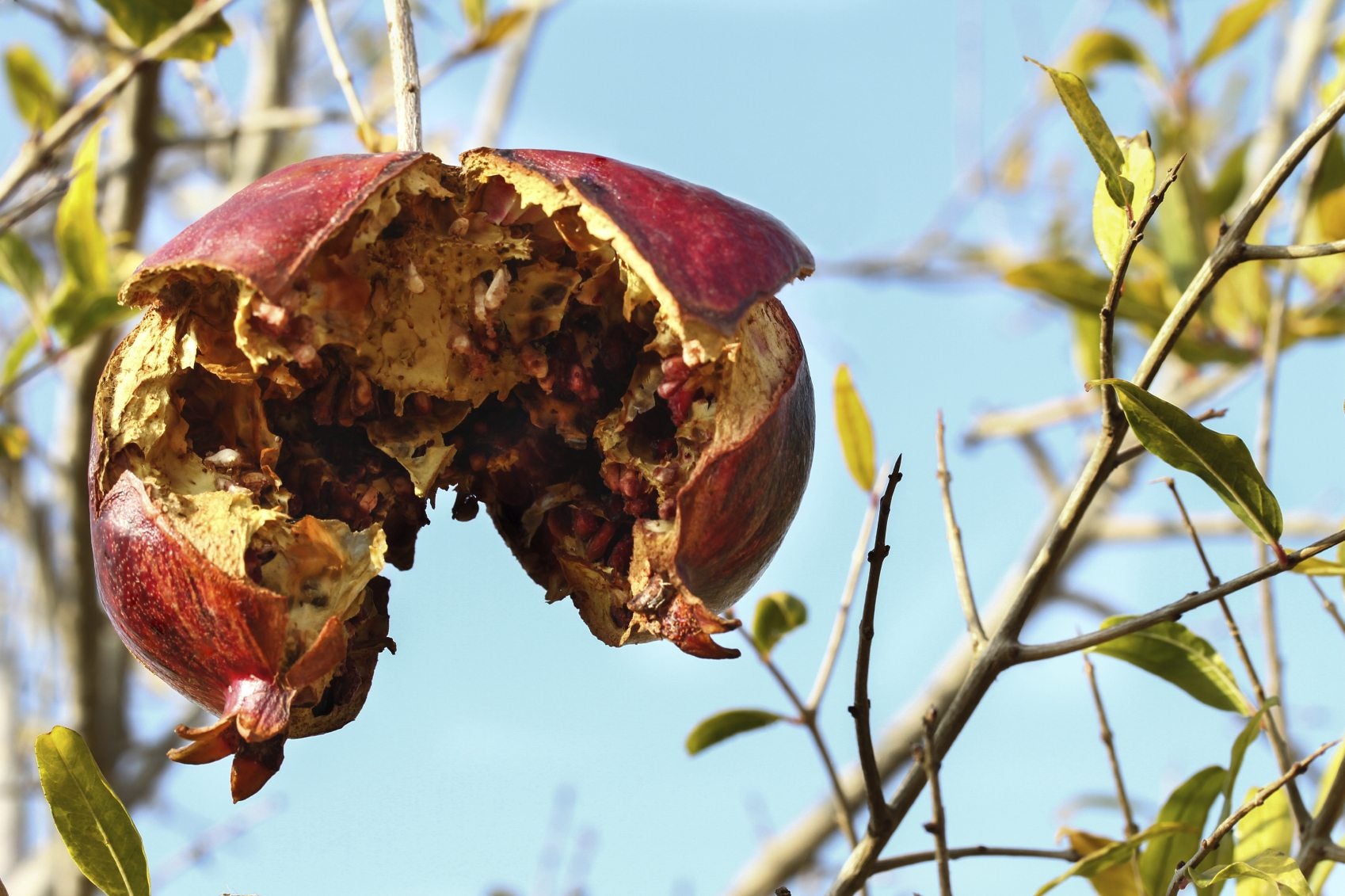 Problems Of Pomegranates: Learn About Diseases In Pomegranate
Problems Of Pomegranates: Learn About Diseases In PomegranatePomegranate fungal diseases are a common issue in plants grown in wet regions. Other diseases in pomegranate are rarer and not permanently damaging to the tree. Learn the problems of pomegranates in this article. Click here for more info.